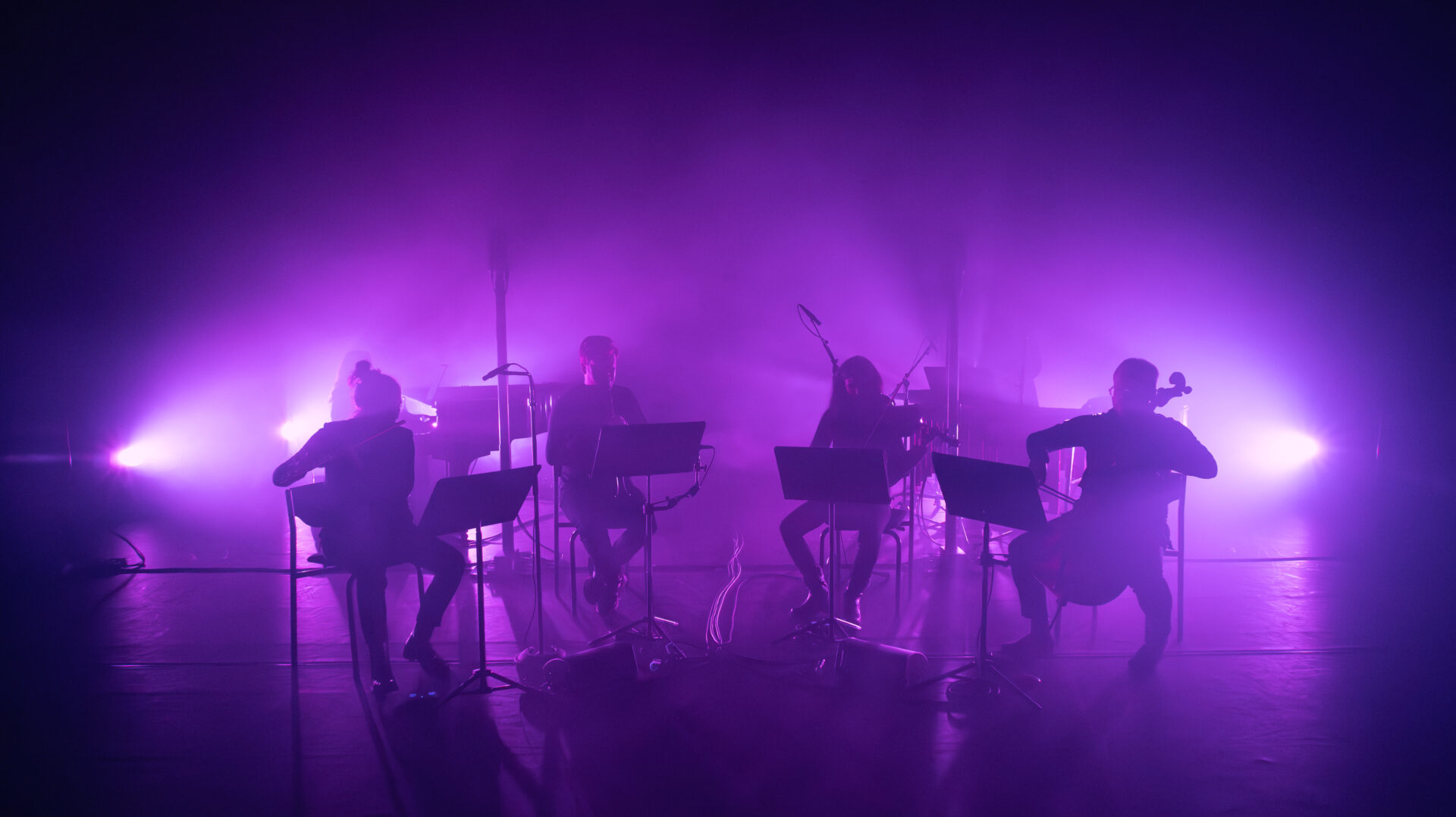New European Ensemble X Nick Verstand
New European Ensemble
Felicia van den End – flute
James Meldrum – clarinet
Pepe Garcia – vibraphone
Malgorzata Walentynowicz – piano
Rada Ovcharova – violin
Willem Stam – cello
Nick Verstand – light sculptures and scenography
Terry Riley – In C (1964)
Salvador Breed – Twiske (2024)
Salvador Breed – Like Paint (2024)
Steve Reich – Double Sextet (2007)
The idea to have the New European Ensemble collaborate with audiovisual artist Nick Verstand originated from the performance Within Without, which he created with composer Salvador Breed for Theater Carré, according to Emlyn Stam, the ensemble’s artistic director. “It was a play of light controlled by the music,” says Stam. “Within Without” consisted of a choreography performed by light sculptures. The work had a stillness and concentration that, in my feeling, would fit very well with Steve Reich’s Double Sextet, with its shifting rhythmic layers. It seemed like a good idea to bring together Reich’s music and Verstand’s light work.” Additionally, the ensemble asked Salvador Breed to write music for this program. “He bridges pop and classical music in his compositions. He adds two pieces to the concert. Twiske, inspired by Steve Reich; and Like Paint, a contemplative electronic piece that combines ambient and minimal. This culminates in Double Sextet. Nick Verstand created a choreography for laser and moving light beams for these pieces that reacts to the music without delay.” In some venues, the concert is supplemented with In C by minimal music pioneer Terry Riley, an early work that can be played by various ensembles.
Terry Riley – In C (1964) In the early sixties, Terry Riley conducted experiments in Paris with tape recorders, which he used to layer music in various layers. Upon his return to San Francisco, he used this technique for In C, which established him as a pioneer of minimal music. The score, which spans a page with 53 melodic cells, does not prescribe instrumentation or number of musicians, and gives no details about dynamics or articulation. Each musician can repeat any module at will before moving on to the next. The piece moves in a constant pulse played on the high C, an idea from Steve Reich who participated in the premiere. The length of a performance depends on the number of musicians and choices they make while playing. The piece can last between fifteen and ninety minutes and ends when all musicians have reached the last module. In C sounds like a radical response to the movement of atonality and serial music, which dominated academic music at the time.
Salvador Breed – Twiske and Like Paint (2024) Twiske and Like Paint are related pieces. Twiske is inspired by the working process and philosophy of Steve Reich. While Reich draws from the energy of the metropolis New York for his music, Breed uses ‘t Twiske, a nature area north of Amsterdam, as a source of inspiration. “I have been walking there every morning since last year,” he says. “The music is an ode to the joy of the walks, the resilience of nature, and the versatility of the beautiful birds and their songs.” In the subsequent piece Like Paint, Salvador Breed uses the frequency spectrum of Twiske to create an abstract sound painting. Breed aims to achieve the state of trance evoked by Steve Reich’s work through a different path. Not through a multitude of impulses, but by strongly limiting their presence. He uses the harmonic and dissonant elements of the frequency spectrum as a brush to apply strokes of paint in sound over time.
Steve Reich – Double Sextet (2007) Reich wrote Double Sextet for the American ensemble eighth blackbird (in lowercase). It is scored for flute, clarinet, vibraphone, piano, violin, and cello. In the original performance, which is also performed by the New European Ensemble, he has the ensemble double itself. It plays live along with a recording, a procedure he previously applied in his Counterpoint pieces and in Different Trains. By doubling the ensemble, two identical instruments can interlock and form a composite pattern. Reich says about this: “You hear how the pianos and vibraphones do that in a powerful rhythm that drives the rest of the ensemble. The idea of placing a musician opposite a recorded counterpart was something I used as early as Violin Phase in 1967. I first expanded that in Different Trains to a chamber ensemble playing along with a recorded version of itself. By doubling such an ensemble as a whole, you make it possible for multiple simultaneous textures of identical instruments to develop from independently moving melodic lines.” Double Sextet consists of two fast movements and a slow middle movement. It is a work that starts off energetically and picks up that energy in the final movement. Reich himself considers it one of his better pieces. He was particularly pleased that it won him the Pulitzer Prize for Music in 2009.
Nick Verstand – light sculptures and scenography Especially for this concert, Nick Verstand developed a kinetic light installation. The installation consists of entities of light that move around the musicians and are connected to the music. “The trance-like movements of light and sound create a modern ritual,” he says. “There is a direct connection between what you see and what you hear. It is one expression.” During Double Sextet, the entities play along with the sextet. He also uses laser light as a visual wall to influence the experience of the architecture of the space.
Support the NEuE
The New European Ensemble creates new concepts for new audiences, informed by the world around us. Our goal is to excite and inspire our audiences. Creating new projects costs time and resources and wouldn’t be possible without help from donors like you. Please support us so we can continue to create and innovate and become a friend or patron of NEuE. Thank you.




